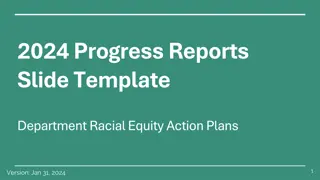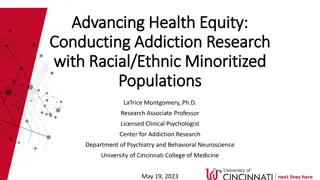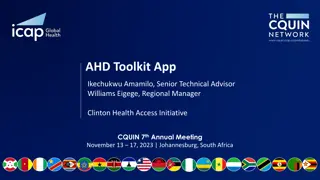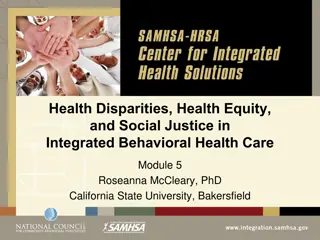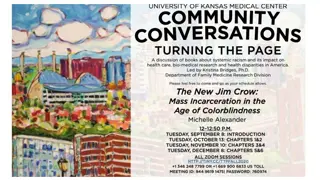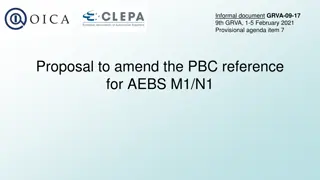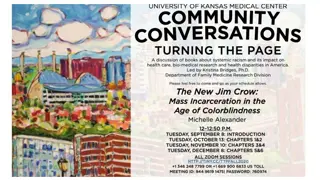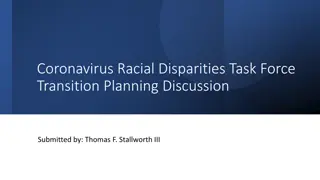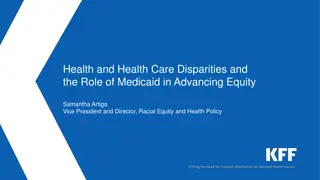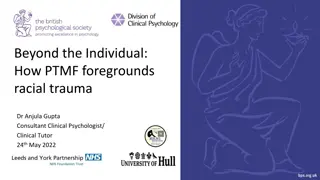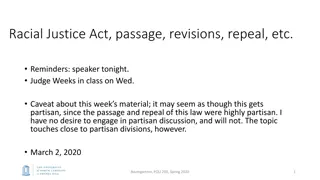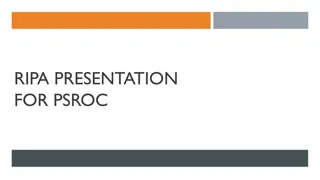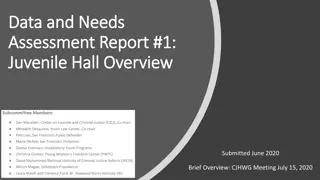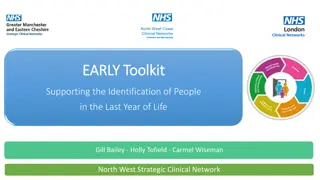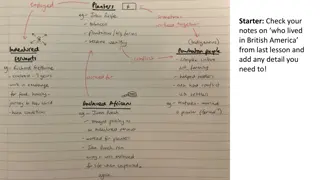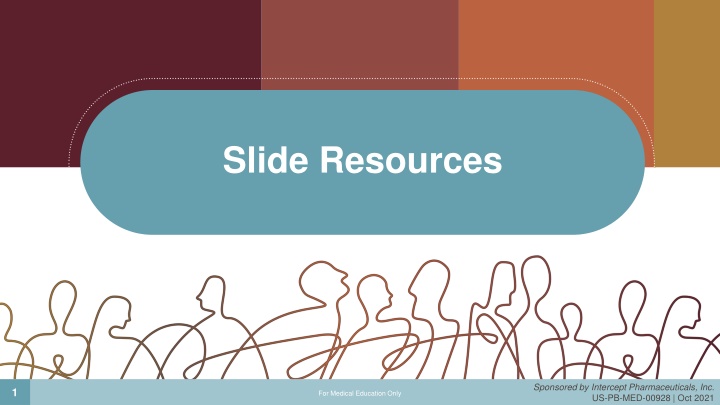
Ethnic Disparities in Primary Biliary
Explore racial/ethnic disparities in primary biliary cholangitis (PBC) outcomes, including incidence, prevalence, disease severity, and mortality rates among different ethnic groups in the U.S. Learn about the impact on patient perspectives and access real quotes. Enhance your medical education presentations with valuable epidemiological and clinical data on PBC disparities.
Download Presentation

Please find below an Image/Link to download the presentation.
The content on the website is provided AS IS for your information and personal use only. It may not be sold, licensed, or shared on other websites without obtaining consent from the author. If you encounter any issues during the download, it is possible that the publisher has removed the file from their server.
You are allowed to download the files provided on this website for personal or commercial use, subject to the condition that they are used lawfully. All files are the property of their respective owners.
The content on the website is provided AS IS for your information and personal use only. It may not be sold, licensed, or shared on other websites without obtaining consent from the author.
E N D
Presentation Transcript
Slide Resources Sponsored by Intercept Pharmaceuticals, Inc. US-PB-MED-00928 | Oct 2021 1 For Medical Education Only
Slide Resources These PowerPoint slides include content that can be used to enhance presentations about primary biliary cholangitis (PBC). Consider updating your PBC-focused slide decks with additional information about racial disparities in PBC. You can copy and paste the content you would like to use into your presentations. Contents 1. 2. 3. 4. 5. Incidence and Prevalence of PBC Disease Severity and Complications at Presentation Mortality Patient Perspectives Real Patient Quotes 2 For Medical Education Only
Epidemiology and Outcomes Data 3 For Medical Education Only
Racial/Ethnic Disparities in PBC Outcomes PBC Incidence and Prevalence in the U.S. (2006 2014)1 From 2006 to 2014, data from the Fibrotic Liver Disease Consortium of 11 U.S. health systems, demonstrated stable incidence and rising prevalence of PBC1 Compared to whites, the incidence rate ratio in Black/African Americans was 17% lower, and prevalence rate ratio was 34% lower in Black/ African Americans and 23% lower in Asian American/American Indian/Pacific Islander (ASINPI)1 1.20 White (ref) Black/African American ASINPI 1.00 * Rate Ratio * 0.80 * 0.60 0.40 0.20 *p < 0.01 0.00 Incidence Prevalence PBC Disease Severity at Presentation2 18 Among large multi-center U.S. study of 535 patients with PBC, significant disparities in severity of disease at presentation were observed2 Compared to Caucasians, African American and Hispanic PBC patients at presentation had 3 times greater prevalence of ascites, 5 times greater hepatic encephalopathy, and 3 times greater history of variceal bleeding2 16 Proportion (%) Caucasian Non-Caucasian 14 Non-Caucasian = African Americans, Hispanics, and other racial and ethnic groups p<0.009 12 10 p < 0.07 p < 0.06 8 6 p < 0.09 4 2 0 Ascites Hepatic Encephalopathy Variceal Bleeding Severe Disease includes any of the following: ascites, hepatic encephalopathy, or variceal bleeding 1Lu, et al. Clin Gastroenterol Hepatol. 2018;16(8):1342-1350. 2Peters, et al. Hepatology. 2007;46(3):769-75. 4 For Medical Education Only
Racial/Ethnic Disparities in PBC Outcomes Compared to non-Hispanic whites, several studies have found that ethnic minorities with PBC have significantly higher mortality1-3 Disparities in PBC Mortality Non-Hispanic White (ref. group) Hispanic African American Asian 1.80 1.80 1.80 * 1.60 1.60 1.60 p=0.0064 * * Odds Ratio for In-Hospital Mortality Hazard Ratio for Waitlist Mortality 1.40 1.40 1.40 Odds Ratio for 1-Year Mortality p < 0.001 p < 0.05 1.20 1.20 1.20 1.00 1.00 1.00 0.80 0.80 0.80 0.60 0.60 0.60 0.40 0.40 0.40 0.20 0.20 0.20 0.00 0.00 0.00 1 2 3 Patients with PBC on Liver Transplant Waitlist Hospitalized Patients with PBC Medicare Patients with PBC 1Galoosian, et al. Dig Dis Sci. 2020;65(2):406-415.2Sayiner, et al. Hepatology. 2019;69(1):237-244. 3Cholankeril, et al. Clin Gastroenterol Hepatol. 2018;16(6):965-973. 5 For Medical Education Only
Patient Perspectives 6 For Medical Education Only
Patient Perspectives on Racial Disparities in PBC Care Patient perspectives on racial disparities in PBC care have not been adequately studied and are not reflected in the medical literature The Global Liver Institute asked a small sample of BIPOC patients with PBC to share insights about their journey with the disease, and several key themes emerged1: Difficulty navigating the healthcare system/access to care Not feeling seen and heard by healthcare providers The risk of late diagnosis 1Source: Global Liver Institute. 2021 7 For Medical Education Only
BI+POC Patient Voices: Living with PBC Being a woman of color with multiple health complications, including PBC, has been extremely difficult. I struggle to understand why our health is not taken seriously. I was disregarded on numerous occasions before I was diagnosed with my diseases. 8 For Medical Education Only
BI+POC Patient Voices: Living with PBC Because I'm educated and I am in a financially secure position, I was able to navigate a complex health system and disease and find the best health care possible to fit my needs. However, I know that there are many who are unable to do that because they do not have the skill set to navigate our health system nor do they have the financial ability to manage it. All of these factors prevent Americans from accessing health care that could potentially save their lives. I'm very lucky. I live outside a city with reputable medical facilities. Thankfully, today I'm doing much better. 9 For Medical Education Only
BI+POC Patient Voices: Living with PBC I want to speak out for all who are struggling with rare and unknown diseases to get the help needed to maintain their health better. Unfortunately, I haven t been given the opportunity yet to get us the help we need. I do at times believe I must be overreacting, or that maybe I m not really ill, because of the lack of support available. 10 For Medical Education Only
BI+POC Patient Voices: Living with PBC It was a lengthy process before I was tested properly and given a diagnosis. I had to put in a complaint and referrals for other health professionals to get involved to help get the right tests before I was considered unwell, no matter how much I complained about the pain and discomfort I was in. 11 For Medical Education Only
BI+POC Patient Voices: Living with PBC At times, when I think about why others are ignorant of our situation, I suppose it may have something to do with our skin/complexion not changing much, or not looking sick enough. Or perhaps we are just not considered valuable enough to get the help we rightfully should be entitled to. 12 For Medical Education Only
BI+POC Patient Voices: Living with PBC My advice for anyone going through similar experiences is to believe in yourself and accept who you are; don t be afraid to be in the spotlight and give your opinion. And lastly, be proud of every single milestone. 13 For Medical Education Only
BI+POC Patient Voices: Living with PBC I ve been struggling with health and race issues for as long as I can remember, and this has led to a lifetime of low self- esteem. After years of self-development, I ve now come to terms with loving me and accepting the amazing person I am. 14 For Medical Education Only

